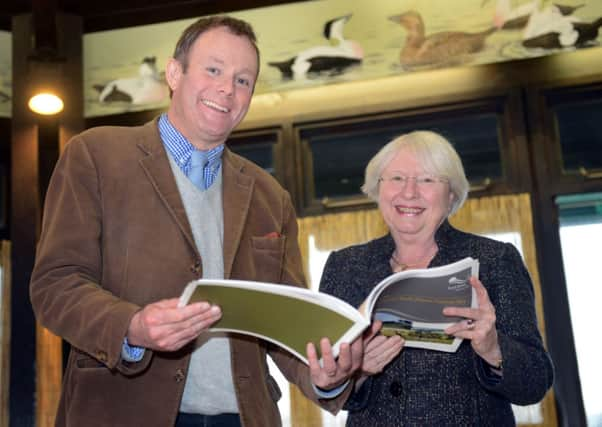South Downs take action against flooding


1.2 million people depend on water from the South Downs National Park but much of this ground and river water is currently failing EU standards due to pollution impacting the wildlife it sustains. Problems include soil being eroded from farmland being deposited in the rivers, interrupting river flow, and also contributing to flood risk.
David Hamilton Fox, who manages the Cowdray Home Farms, in West Sussex, said:“The River Rother in the heart of the South Downs National Park floods most years but this winter has been particularly bad. As well as misery for locals we have lost a considerable amount of topsoil, which is vital for growing crops, and will eventually increase the silt in the river – perhaps leading to more flooding.
Advertisement
Hide AdAdvertisement
Hide Ad“We’re working with the South Downs National Park Authority, the Universities of Northampton and Oxford, and the Arun & Rother Rivers Trust as part of a project to identify precisely where the soil erosion is happening and exactly where to take action to prevent it in the future. We’re already using soil traps which have made some improvement but we’re now going to plant 600 native trees on the estate – it’s a very sustainable way to make the ground more stable.”
Meanwhile water companies are working with the National Park to find more long-term solutions to sources of pollution. For years water companies have been concerned about rising trends in nitrate pollution, which is very expensive to treat. New research being spearheaded by the National Park – and developed in partnership with the Environment Agency, Southern Water, Portsmouth Water and the Downs & Harbours Clean Water Partnership – will finally identify the specific causes of nitrate pollution so that they can be directly targeted by water companies and other partners.
Neville Smith, CEO of Portsmouth Water, said: “Knowing exactly where the sources of pollution are will enable us to focus our resources specifically on problem areas, to reduce the nitrate issue at source, rather than have to construct expensive treatment plants. This will provide long-term benefits to our customers.”
Margaret Paren, Chair of the National Park Authority, said: “National Park designation is adding benefits for people living in and around the South Downs through new partnerships and national investment. The Partnership Management Plan for the South Downs National Park, launched today, demonstrates how people and organisations are working together to care for and protect these very special landscapes. Our water partnerships with farmers, water companies and conservation organisations are just one of the many examples of exciting new projects that are being put in place.”
Report contributed by Joanna Glyde.